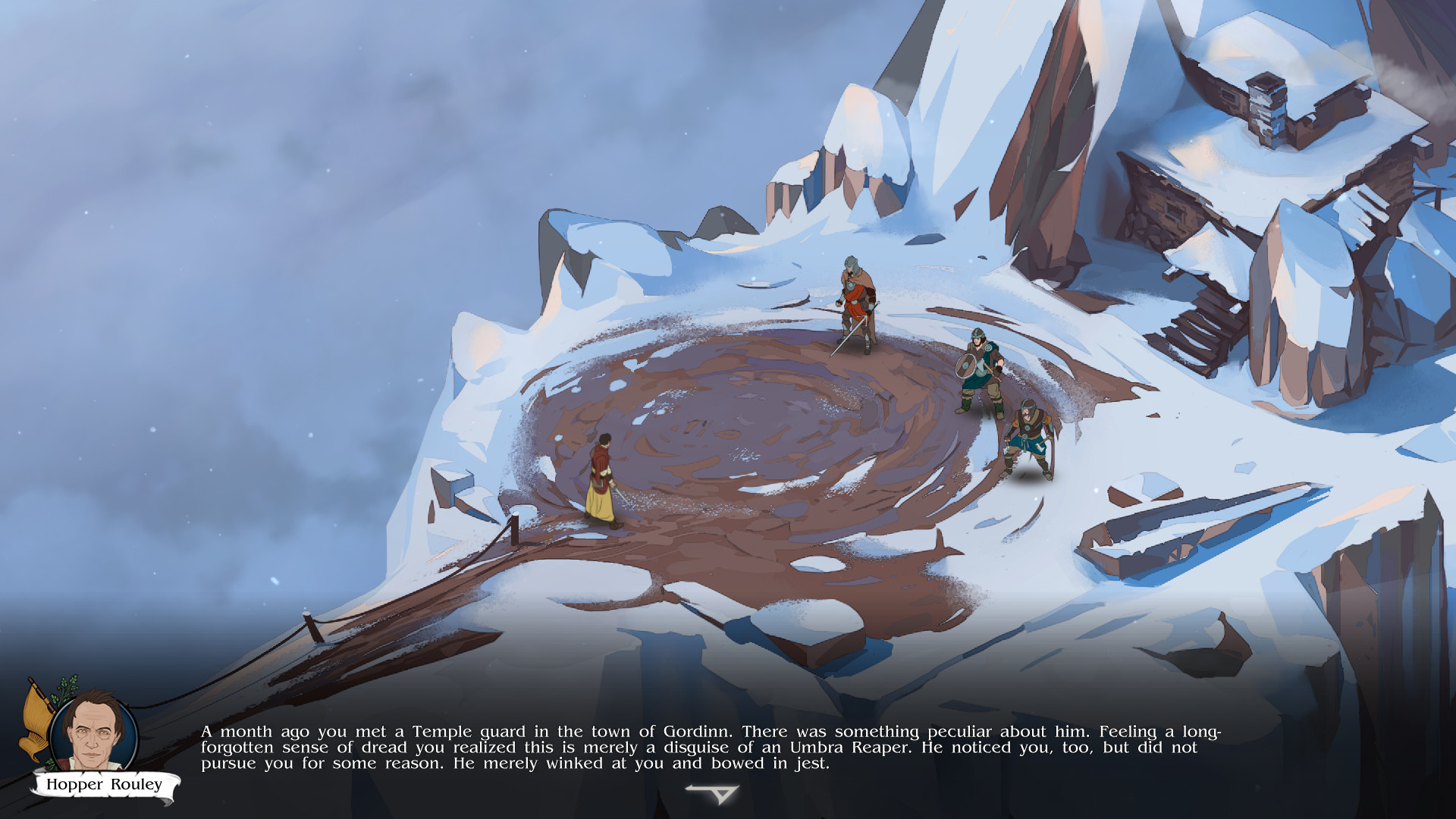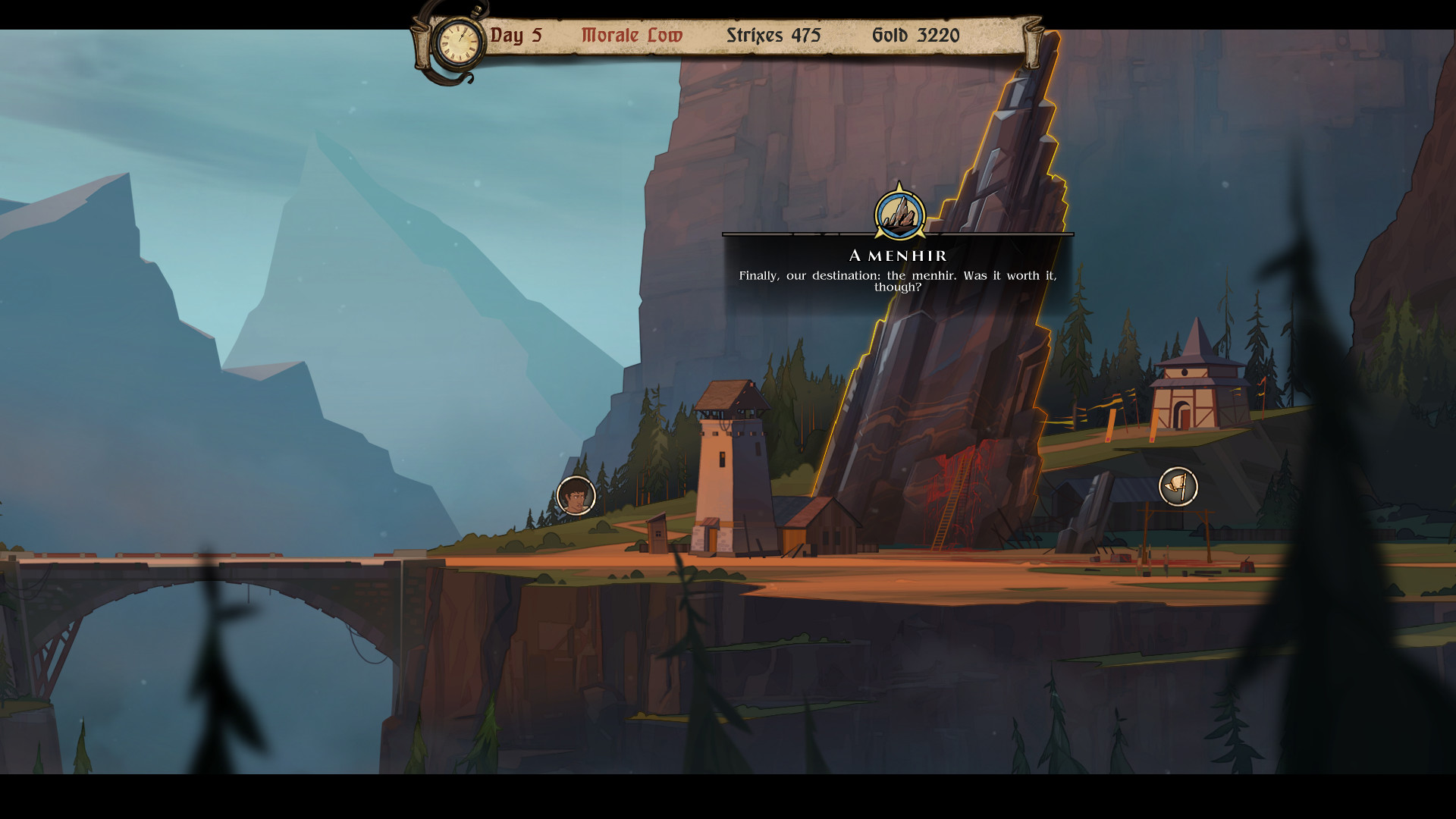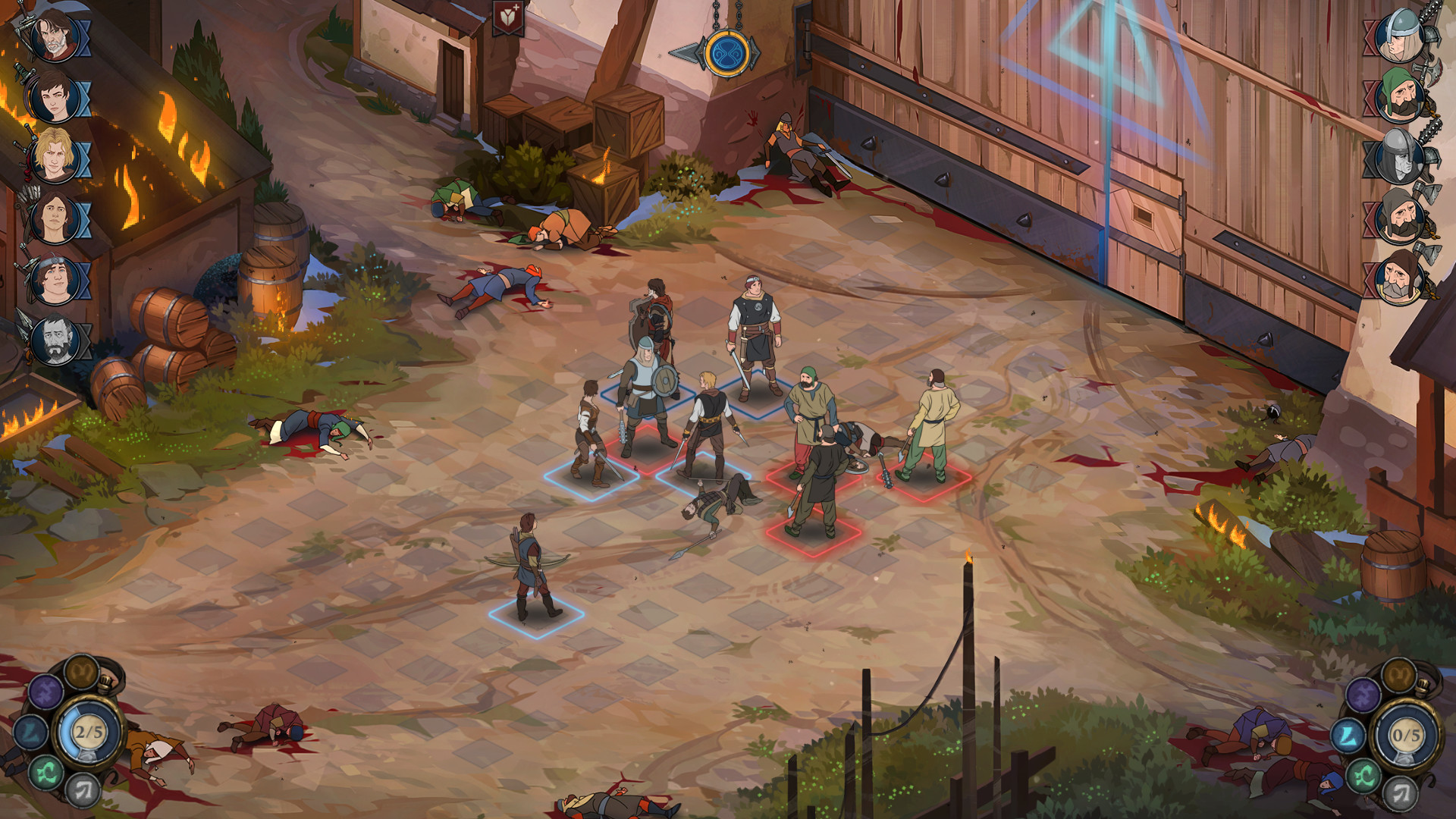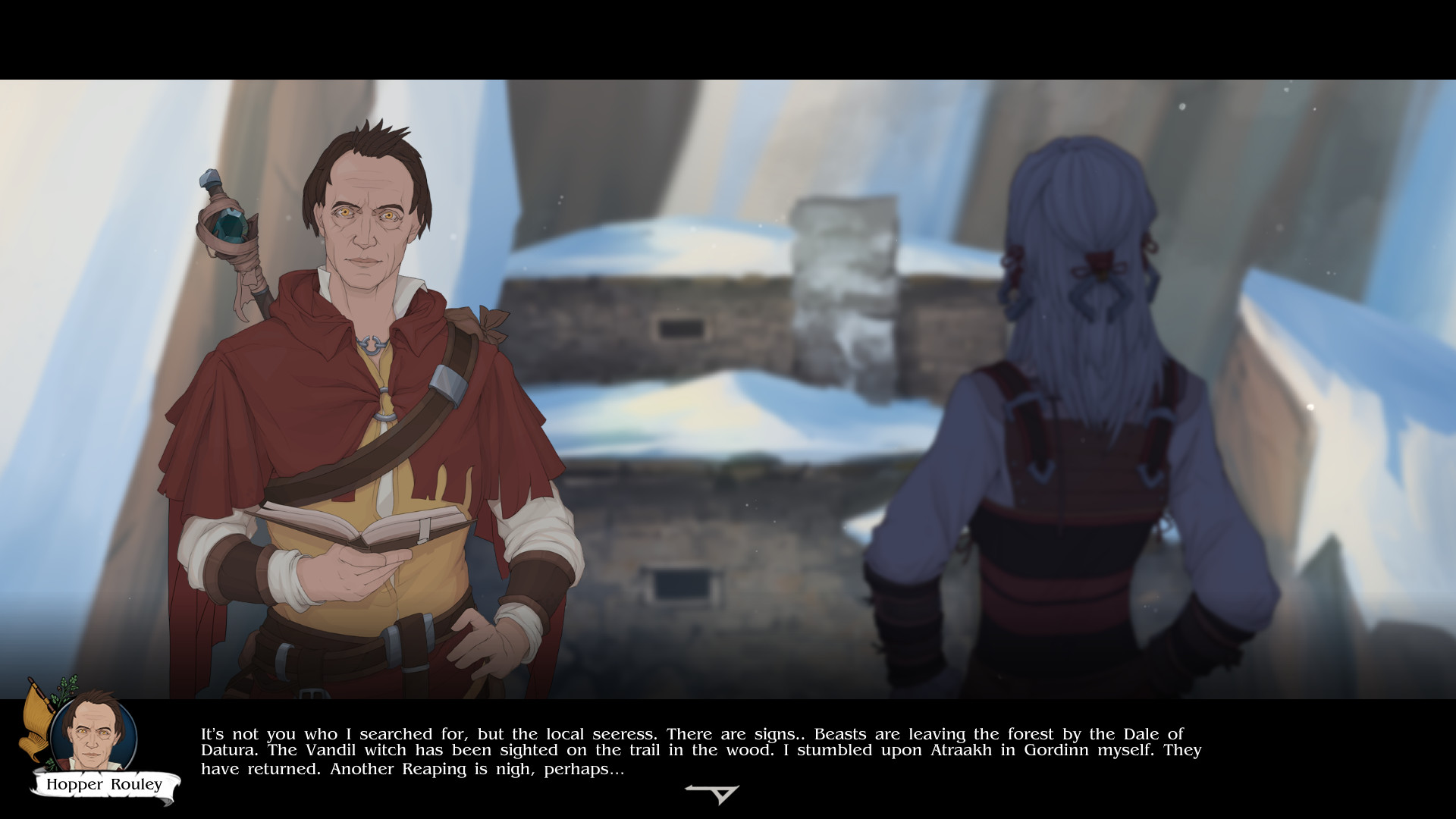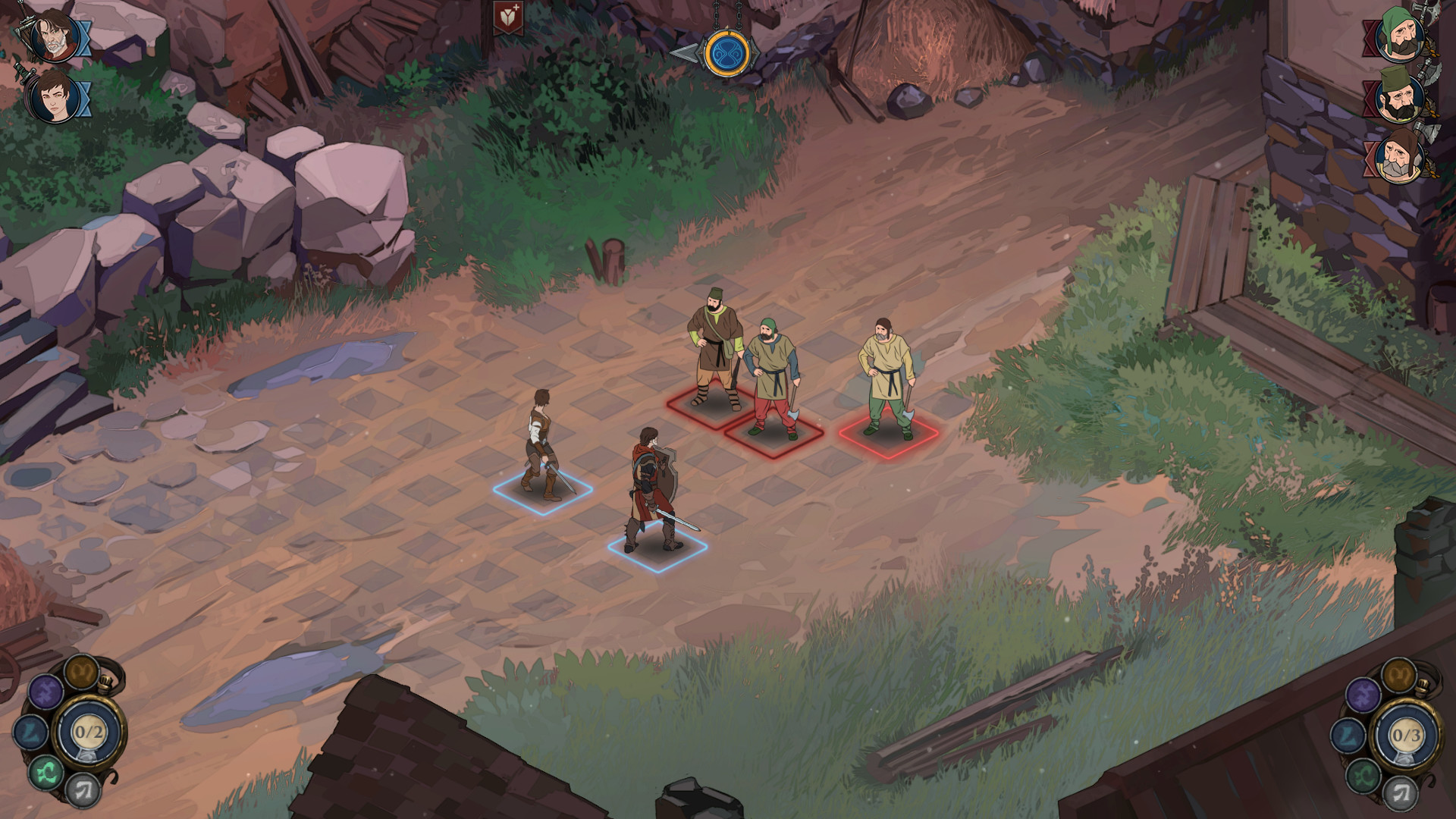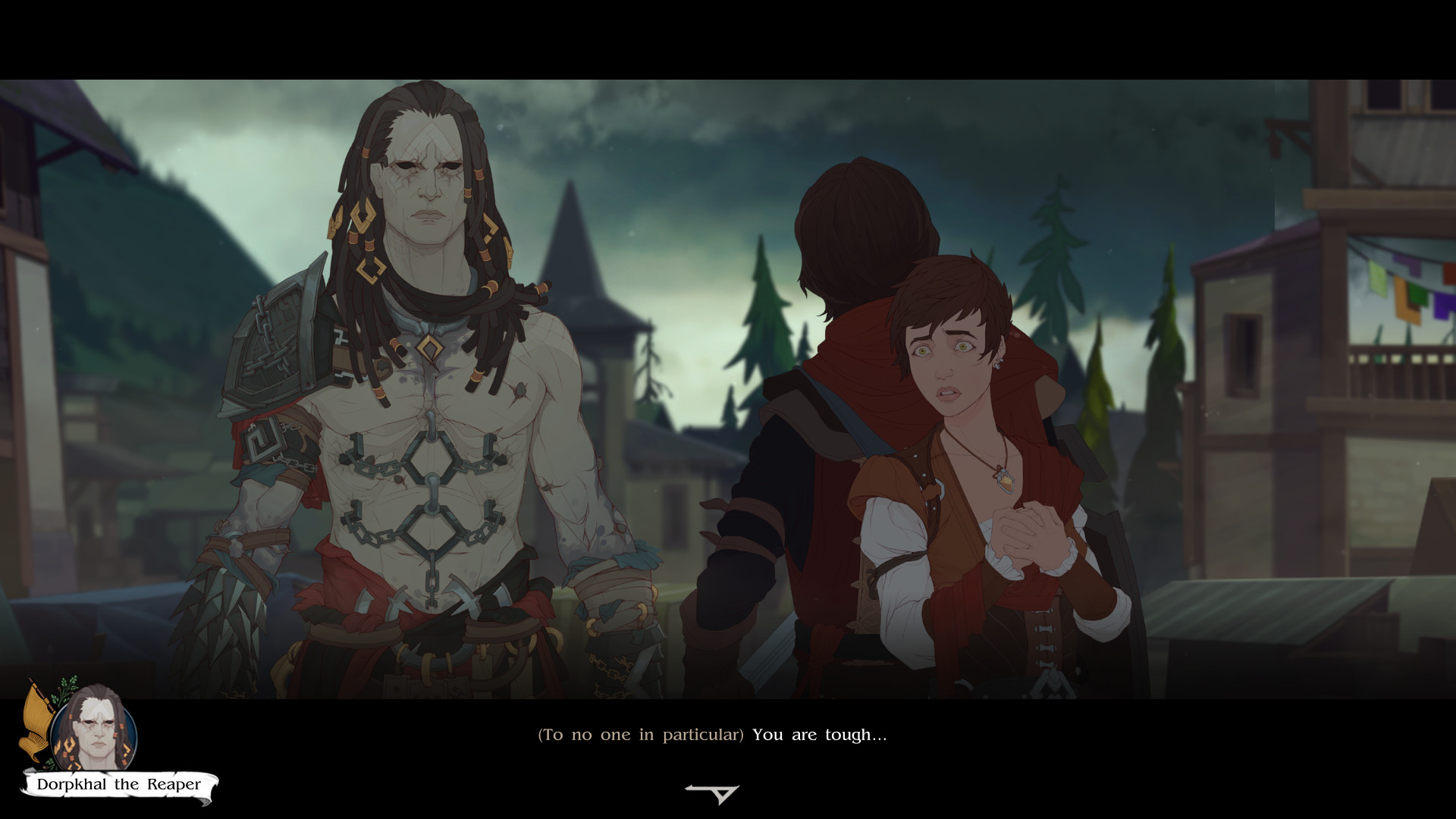Ash of Gods: Redemption is a turn-based RPG that combines tactical combat, CCG elements, and a constantly evolving story in which no one is safe from death, including the main characters.

Ash of Gods’ storyline is constantly evolving in response to players’ choices, sometimes even resulting in death. But, the death of a character is not game over. Instead, the story moves forward with the death of that character and previous choices continuing to impact future events.
Combat in Ash of Gods is a blend of both traditional turn-based strategy and CCG gameplay. While individual tactics will depend upon the skills and classes of your characters, you will unlock and accumulate cards that have the power to unleash powerful abilities, sometimes altering the course of an entire battle.


Written by the award-winning fantasy author, Sergey Malitsky, Ash of Gods is a story-rich game full of memorable characters, powerful dialogue, and deep lore. Malitsky is currently working on a new novel stemming from the events of Ash of Gods.




GAMEPLAY
Ash of Gods is the story of three separate protagonists rising in response to a centuries-old menace once thought to be mere folklore.Ash of Gods’ storyline is constantly evolving in response to players’ choices, sometimes even resulting in death. But, the death of a character is not game over. Instead, the story moves forward with the death of that character and previous choices continuing to impact future events.
Combat in Ash of Gods is a blend of both traditional turn-based strategy and CCG gameplay. While individual tactics will depend upon the skills and classes of your characters, you will unlock and accumulate cards that have the power to unleash powerful abilities, sometimes altering the course of an entire battle.

WHAT MAKES ASH OF GODS UNIQUE
- Decisions with Major Impacts
- No Random Dice Rolls
- AI that Adapts to You
- PvE and PvP Multiplayer
- Rewards for Risk

THE STORY
After 700 years, peace in Terminum is about to end. The Feast of the Spring Equinox is in full swing when the town bell begins to ring. Captain Thorn Brenin, the bodyguard Lo Pheng, the scribe Hopper Rouley, and many others, do not yet know that the reapers have returned and intend to drown the world in blood so that they may awaken the sleeping gods.Written by the award-winning fantasy author, Sergey Malitsky, Ash of Gods is a story-rich game full of memorable characters, powerful dialogue, and deep lore. Malitsky is currently working on a new novel stemming from the events of Ash of Gods.

THE ARTWORK
Inspired by the works of Ralph Bakshi (The Lord of the Rings), classical Disney animation, and the prolific Soviet studio, Soyuzmultfilm (The Snow Queen), Ash of Gods features intricately hand-drawn illustration and animation. Rotoscoping, a technique in which a scene is first filmed with a live actor to use as reference, instills every frame of animation with incredible detail and a true sense of life.
THE MUSIC
The original soundtrack is a collaboration of Adam Skorupa, Krzysztof Wierzynkiewicz, and Michal Cielecki, whose previous work includes The Witcher, Bulletstorm, Painkiller, EVE Online, Call of Juarez, and Shadow Warrior. Every track was recorded live by professional musicians, often using traditional instruments rarely encountered in contemporary recordings.
DEVELOPER'S DIARY #2 [February, 3rd, 2017]
We are slightly behind schedule creating the episodes for the game. As far as the art and script are concerned, there are 4 episodes ready (8 scenes and 3 cutscenes). We are still making several cinematics and backgrounds for dialogues, but the most complex part is over. The tools in Unity are still not fully ready and this is a big constraint for us. I think we’ll fix everything we need during the very first week of February. We can now already assemble episodes, but it’s not as convenient as it should be, and as we’ve realized from the unsquashed bugs, not entirely safe either.
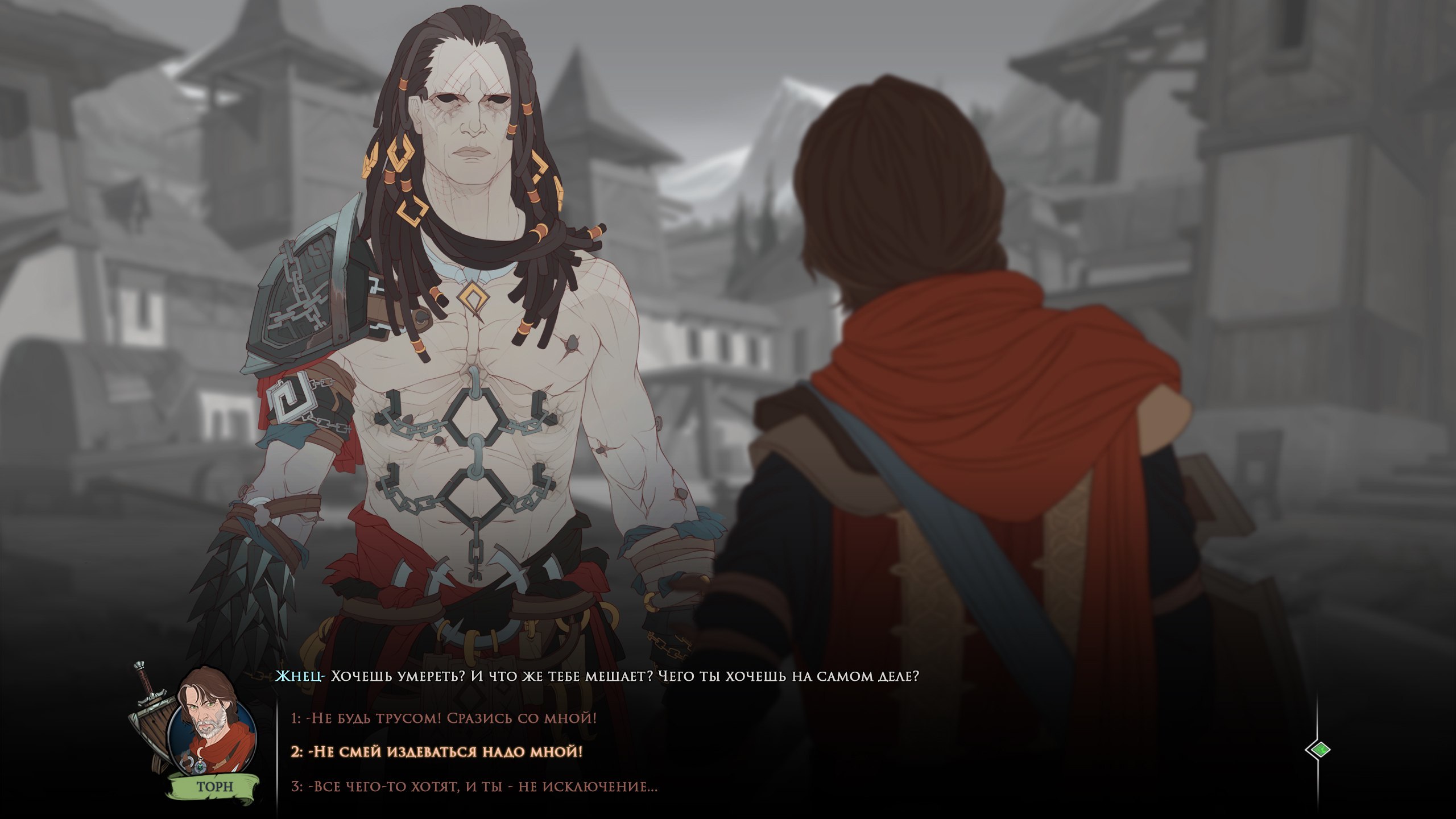
On the screenshot above you can see the first working version of the UI where the phrases and possible answers are shown. We are very eager to make it comfortably readable and to make it clear who said what and who replies to whom.
Now, when we’re associating the Articy story episode and the graphic scene in Unity, the game engine automatically places onto the sequencer the dialogues, the author’s text, battles and special groups which are considered by the game as the place where you see the dialogue icons, the store, and other actions for the current location.
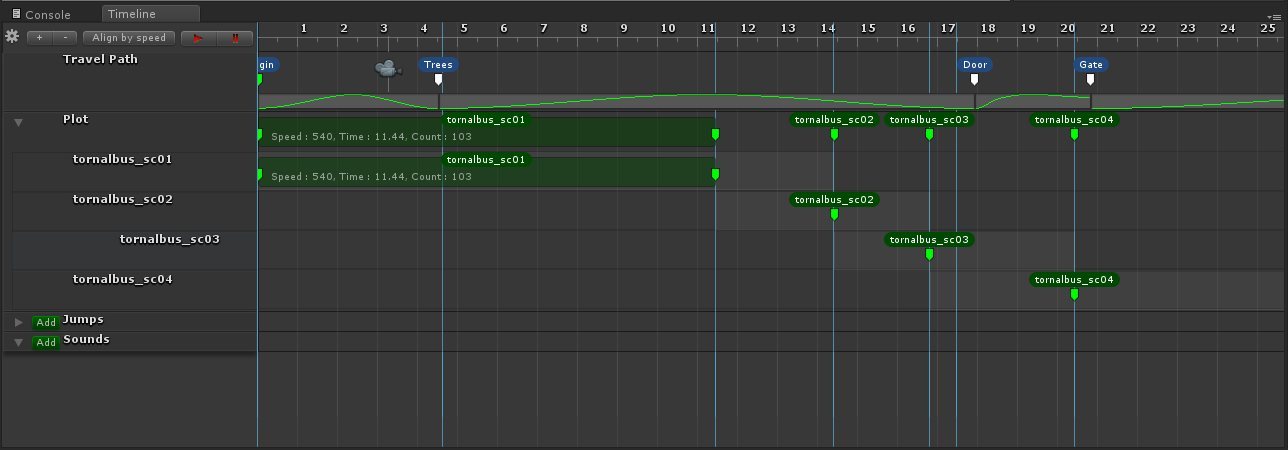
I’ve already mentioned that we are doing everything in parallel. Because of that, when the integration comes, we sometimes have to redo some of the earlier episodes, to make them comfortable for the import. I still suppose that this strategy is way better than to wait for the game engine to be fully ready for import.
This game contains several defining and very complex episodes (from the point of view of implementation). These are parts 8, 10, 12 and 15, where the actions take place in one and the same city – Ursus – but with different protagonists and in different times. I write about this because it is our own version of hell, so to say. You have to track all the possibilities of each character to die. This means that we have to walk through all the episodes where these characters are featured and reset their storylines to make the story look logical when you consider every version of the episode’s ending. I suspect that this is just the first circle of Hell, because we are still not taking into account the behavior of protagonist (whether he is a good person or behaves like an asshole) in the dialogues.
https://www.youtube.com/watch?v=u3blT4gNiog
The music for the game is being created by Adam Skorupa and his colleagues Krzysztof Wierzynkiewicz and Michał Cielecki. We are planning to record over an hour of music before the end of summer—in general this is West European and Pagan folk music, with vocals and polyphony in a fictional language. Some tracks – the music of combat scenes, for instance – are set to fit the individual types of enemies. The “bad guys” in our game are Frisians (inhabitants of the Northern kingdoms), Gells (an equivalent of Celtic warriors) and Ensa (otherworldly intruders). We will try to record the individual tracks for each of these factions, the tracks which will reflect the nature of these foes. Some of tracks will just reflect the set of emotions or be intended for use in specific scenes.
https://www.youtube.com/watch?v=_n_7gEp3Nhw
In January we completed the first track for the game – the music for the main menu. Vocals by Magdalena Przychodzka, guitars by Aleksander Grochocki, the medieval fidule by Katarzyna Kamer. The fidule is quite an exotic instrument. At the same time, I think that it amazingly reflects the feeling of anxiety and desperation. We are planning to record some more exotic instruments – the gadulka and, probably, some unusual drums.
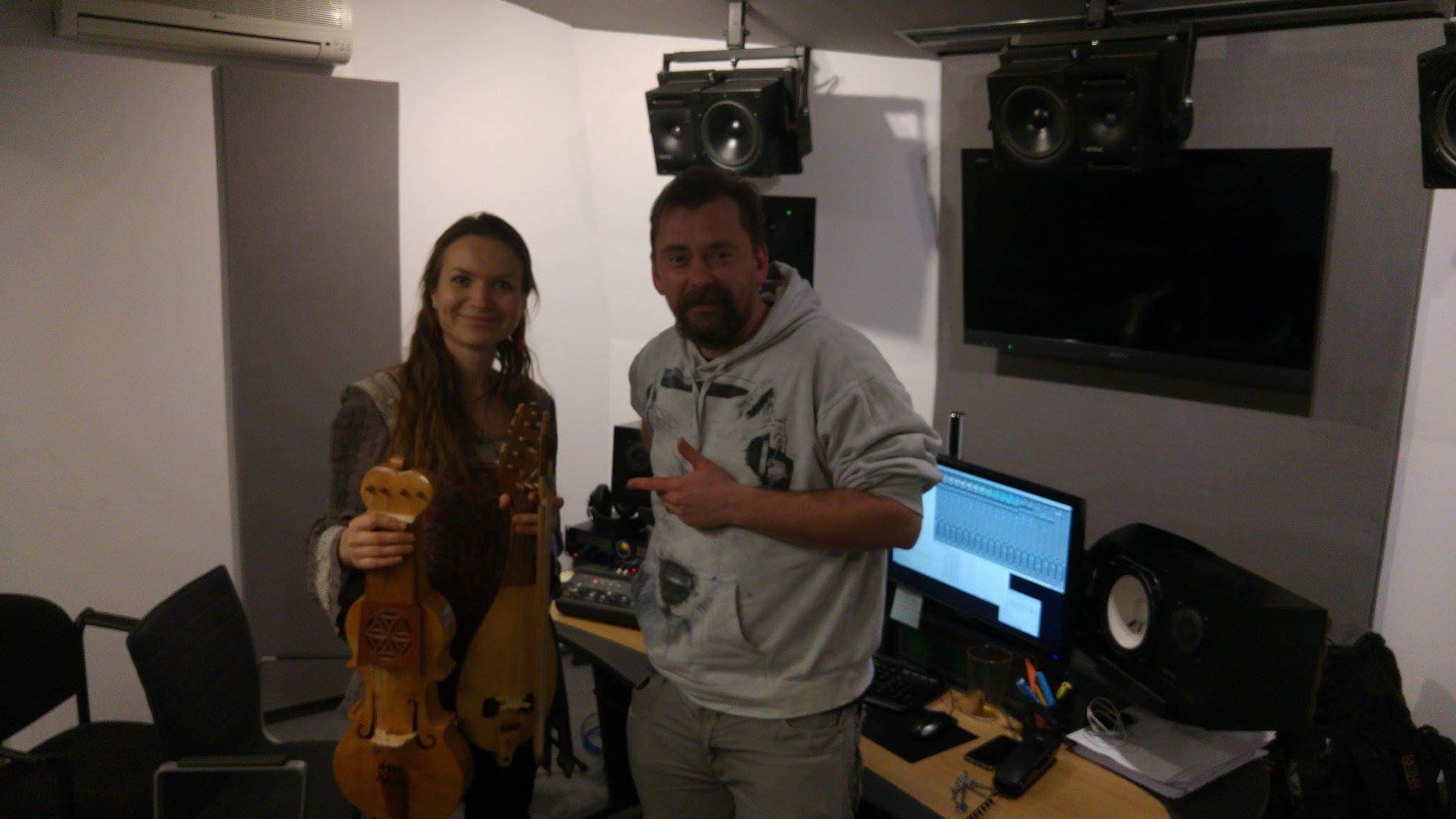
On the upper photo you can see Adam Skorupa and Katarzyna Kamer during the recording session for the music of the Ash of Gods main menu. In February we plan to finish the music for the intro and outro videos as well, and then we will begin to work on the first battle themes: four whole tracks lasting a total of 12 minutes. Maybe we will include male vocals—we are thinking about it now.

To be honest, I write about this video just because I’m very excited about it. I cannot show it now (otherwise it will no longer be “terribly secret”), but I want to write a couple of words about it all the same.
The intro plays a crucial role from the point of view of the plot—in fact, during 2/3 of the game you will search for the answer of question “what and why has happened here?” We want to make a player ask many questions to himself and to us. We want to bring a fog-like feeling of uncertainty and, partly, to give an answer about the game’s title. The upper picture is the tonal scheme for the first seconds of intro video.
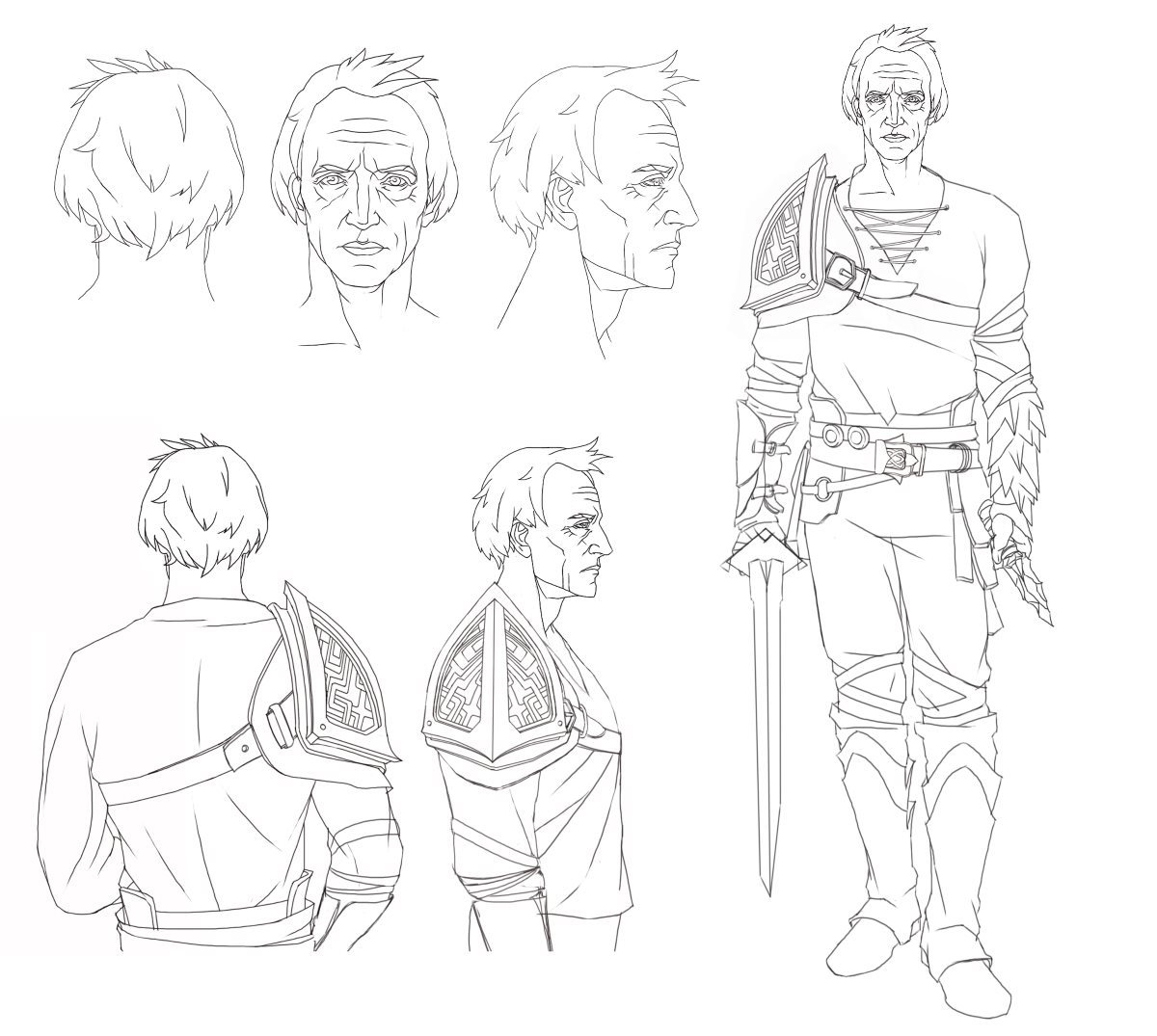
This is the clean line (in its quality) for one of the crucial characters of this video – Hopper Rouley. As with all the other animation in the game, this video will be hand-drawn frame by frame. It has required a lot of complex montage. For some scenes we had to do the reconstruction in 3d to set the camera and the motion of a large amount of people. It is almost two minutes long and has a very tense plot with a lot of action. We came to the final of the first part of this work – the 19th version of animatic is complete and the first scenes are ready to be drawn in a rough line. The very first of them is even ready for the insertion of the intermediate frames.
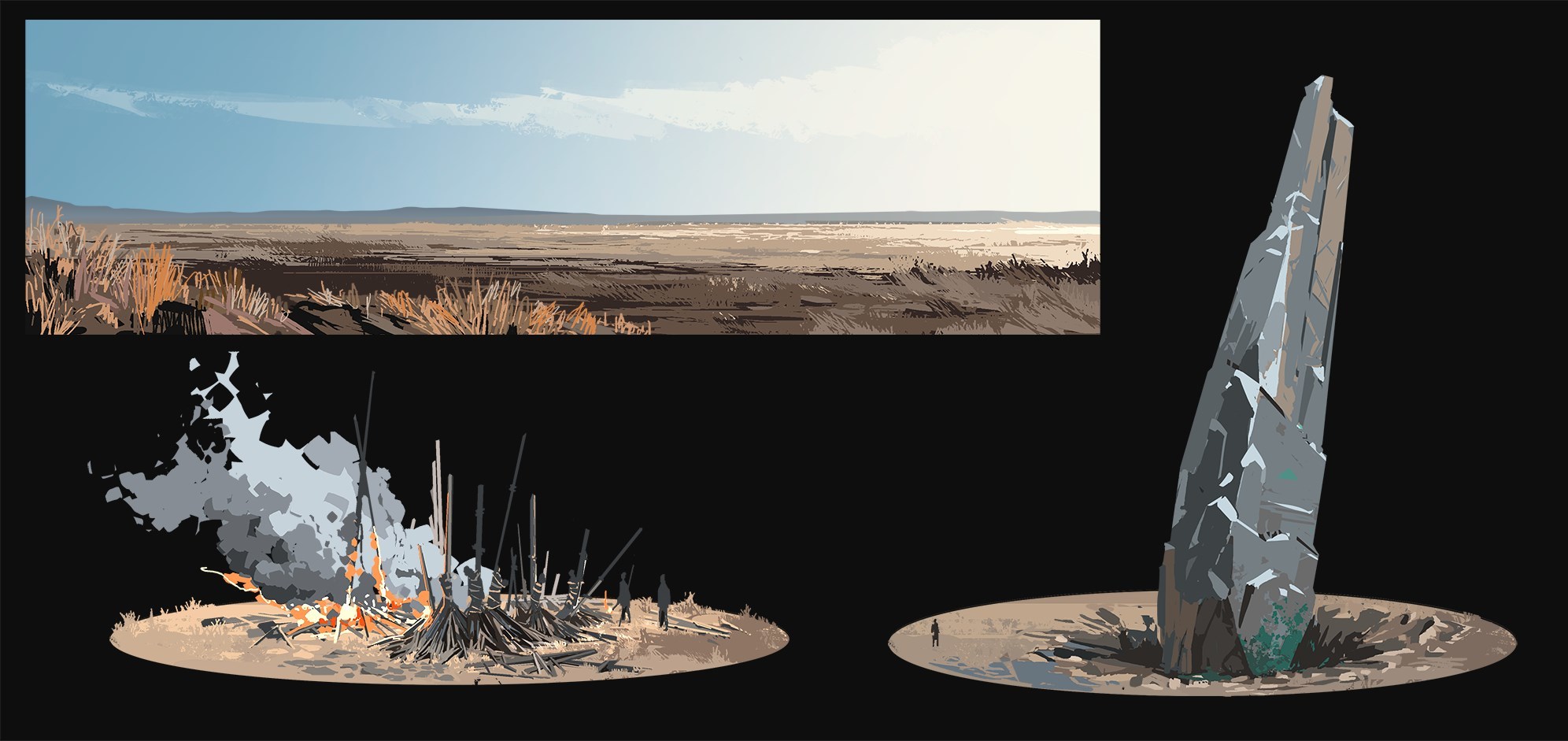
These pictures show the concept of location where the action of the intro video takes place. Adam Skorupa composes the music for the first 38 seconds, while our new-found sound engineer and sound designer provides the post-scoring. I’ve crossed my fingers in the hope that we will not fail with this intro; because we want to impress and fascinate all of you with this.
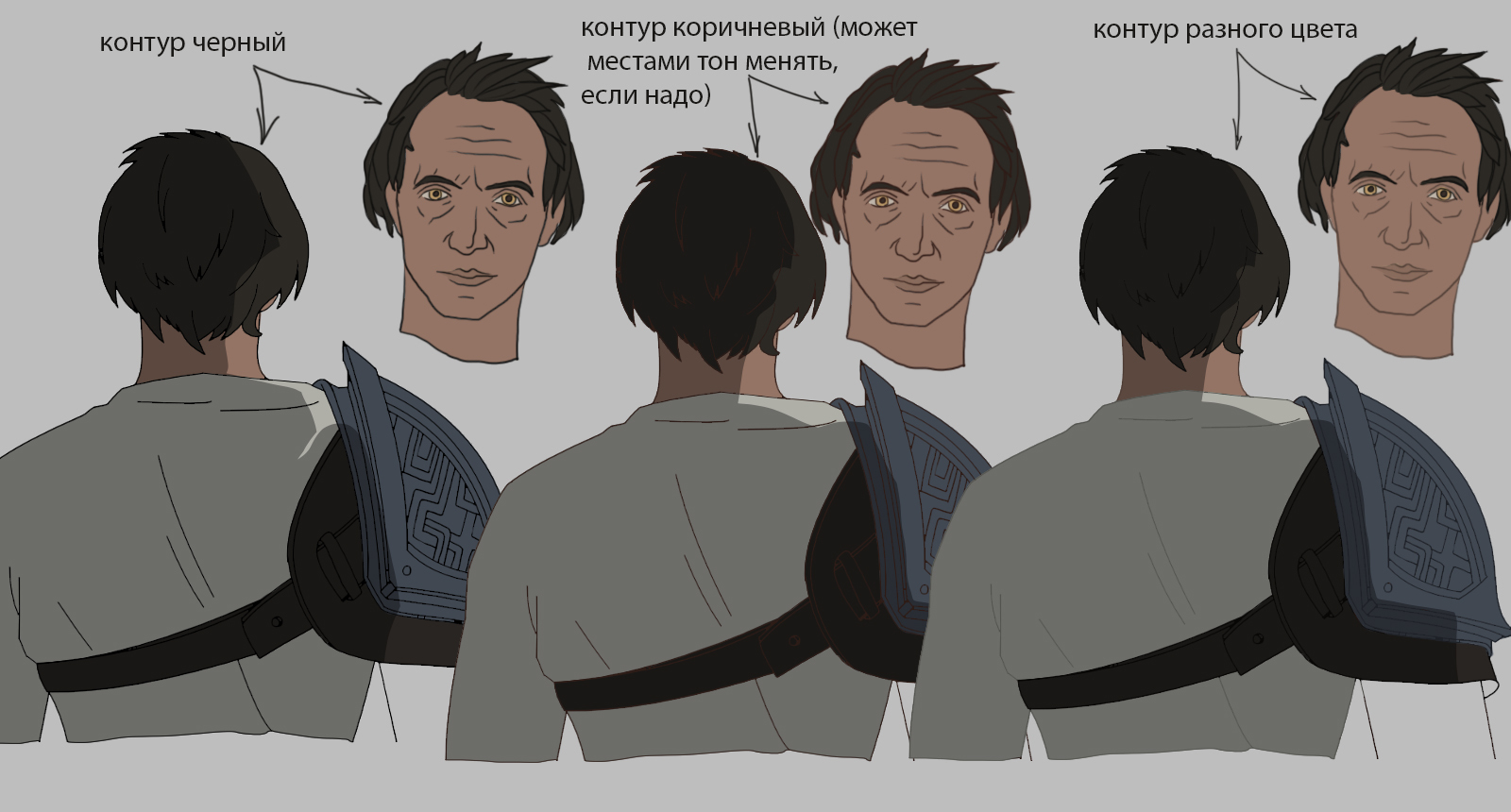
This is the stuff that showcases how we chose the contour lighting tech. In the working version we paint the middle and the long-range distance in brown, while the frontal perspective will use the contour adapted for the color of the substrate.
Also, we have already started to work on the outro video too. In the working version of it we have 3 different endings, but, independently of them, we have also a little second ending – which will be a bridge between the first part of game and the next chapter of the story.
The most huge and complex part of our work (i. e. “the biggest headache”) is the creation of the combat animations for the characters. On average each unit requires 16 animation sequences of approximately 80 frames for each of them. The creation of a full sequence takes about a month of work for one animator.

The rotoscoping technique makes the animation creation simpler, but only in part. There are some very complex animations – getting damage, the death of the character, or simply walking – you can’t do it well if you lack the skills of an experienced animator. It’s very difficult to properly record the damage sequence, while the walking animation suffers due to the cycle length. All the animations where the actor moves suffer due to perspective distortion. We record them on a 35mm camera (though we have to turn it on its side), because with the 50mm, where distortions are barely seen, it’s impossible to find a studio where you can record something in isometric perspective. The 50mm cam should stand at a distance of not less than 9 meters from the recording subject, and has to be lifted at least 7 meters higher than the floor.

Sadly, we didn’t record those auditions when I tried to actually hit the actors with a stick to get the necessary level of lifelike damage reactions. Now this point is a complex thing because it requires a huge volume of the animator’s work – to make it obvious for the player that the character has really been hurt. The second problem is the gait. In the studio where we are recording videos, there’s not enough space for a full walk-cycle, so if you only use the rotoscope, the characters literally look lame. We are thinking what to do with that.
From the beginning of current year we decided to stop using TVPaint in preference of Toonboom (the software for frame-by-frame animation). If you are still in doubt which of these two you should use—pick ToonBoom. It will allow you to work faster, while the tools of line control allow you to receive similar pictures even when different animators are working on the same animation or its frames – the key ones or during the insertion of intermediate frames.

This is the crowd from the combat scenes of Ursus city. We had a long argument among the team: whether it was good to place the static images (for example, the city inhabitants) on the battlefield. It may look strange that during the battle on the city street the citizens are standing still instead of running for their lives. But if we wouldn’t use the people and animals for the scenes arrangement, the levels would seem empty and not lifelike. It’s long and expensive to create full complex animations for such objects. So, we finally decided that we will draw the animations with a low frame frequency – about 10 frames per second (for 2 or 3 key frames and automatic insertion of intermediate frames in ToonBoom). It can be a drunk holding up the wall, or a woman with buckets, who drops them in the beginning of the fight and presses herself against the wall. Maybe some scared people will look out of the windows and close the shutters. Just some simple activity which would allow you to feel the life and vibrant emotions of the environment.
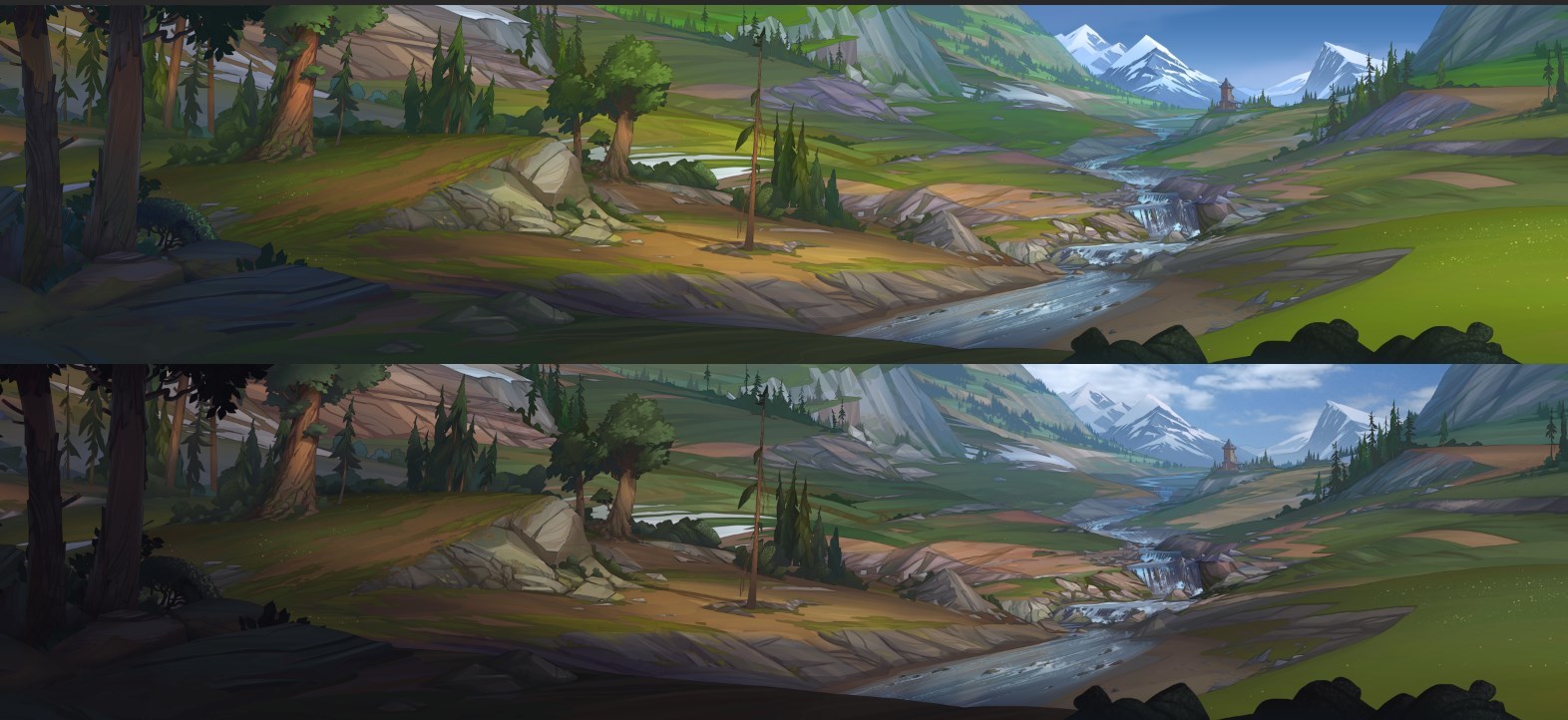
Another complex moment is shown on the upper picture. We had a lot of work on the color correction in the scenes which were already created (the upper one is “before”, the lower is “after”). The difference between earlier and later scenes was very significant, so Andrey Zherdev has revisited the old scenes to make them equal by tone and atmosphere to the newer ones. With some of them we significantly missed with the emotional tone (there are corpses around but you cannot feel it from the picture). I hope that the current view is the final.
We’ve began to code the network part of the game. I think that by the middle of March we will have the basic possibility of holding matches, and it will allow us to play a rough but real game not in the html prototype but in Unity. Now we try to use PhotonServer as the lobby and game server. It’s too early to talk about anything else now. We are planning to take part in the DevGamm exhibition in March, to show off our combat system as close as possible to the final expected result.
Also, we’ve completely finalized our combat animation schedule (about 5 characters per month) and decided how we should correct the overall work on the game accordingly – everything that concerns recording sessions, actors, references and integration.
Since the previous issue of our devblog we drew 5 characters, animated 6 dialogue portraits of heroes and completed the rotoscope of 2 ones. Also we drew 2 combat scenes (both from the city of Ursus). One of them is the constructor that will simplify the composing of multiplayer scenes and other city battles for us. Sergey Malitsky has completed 27th chapter of the novel (there are 30 of them totally) and we already know in detail how the story will end. And, at the end of the day, I’ll give you a little spoiler: as it turns out, Frisia has an undercover agent among your allies and if the player does not realize who it is, he will shout: “Le Roi est mort“.
During the first month of the new year we passed several important milestones in a row. We finished the first music track for the game and completed work on the rotoscope data of our first two characters—Ramlin and the archer Ark. We also began to work intensively on the network part of the game and a new game designer joined us—focusing on balance and the game mechanics. Also, we completed work on the animatics and the storyboard for the game’s intro video.
THE BUILD AND THE PLOT
We are slightly behind schedule creating the episodes for the game. As far as the art and script are concerned, there are 4 episodes ready (8 scenes and 3 cutscenes). We are still making several cinematics and backgrounds for dialogues, but the most complex part is over. The tools in Unity are still not fully ready and this is a big constraint for us. I think we’ll fix everything we need during the very first week of February. We can now already assemble episodes, but it’s not as convenient as it should be, and as we’ve realized from the unsquashed bugs, not entirely safe either.

On the screenshot above you can see the first working version of the UI where the phrases and possible answers are shown. We are very eager to make it comfortably readable and to make it clear who said what and who replies to whom.
The key problem that has caused a lot of our “trials and tribulations” is to associate the data model and the arrangement of the scenes in Articy with how it should be reproduced on the episode sequencer in Unity.
Now, when we’re associating the Articy story episode and the graphic scene in Unity, the game engine automatically places onto the sequencer the dialogues, the author’s text, battles and special groups which are considered by the game as the place where you see the dialogue icons, the store, and other actions for the current location.

I’ve already mentioned that we are doing everything in parallel. Because of that, when the integration comes, we sometimes have to redo some of the earlier episodes, to make them comfortable for the import. I still suppose that this strategy is way better than to wait for the game engine to be fully ready for import.
Dmitry (the game designer) and Sergey (the author of the script) have finally found a common literary language, so the process of editing the episodes now takes much less time. I wouldn’t risk to give any numbers now, but everything obviously goes easier now.
This game contains several defining and very complex episodes (from the point of view of implementation). These are parts 8, 10, 12 and 15, where the actions take place in one and the same city – Ursus – but with different protagonists and in different times. I write about this because it is our own version of hell, so to say. You have to track all the possibilities of each character to die. This means that we have to walk through all the episodes where these characters are featured and reset their storylines to make the story look logical when you consider every version of the episode’s ending. I suspect that this is just the first circle of Hell, because we are still not taking into account the behavior of protagonist (whether he is a good person or behaves like an asshole) in the dialogues.
MUSIC
https://www.youtube.com/watch?v=u3blT4gNiog
The music for the game is being created by Adam Skorupa and his colleagues Krzysztof Wierzynkiewicz and Michał Cielecki. We are planning to record over an hour of music before the end of summer—in general this is West European and Pagan folk music, with vocals and polyphony in a fictional language. Some tracks – the music of combat scenes, for instance – are set to fit the individual types of enemies. The “bad guys” in our game are Frisians (inhabitants of the Northern kingdoms), Gells (an equivalent of Celtic warriors) and Ensa (otherworldly intruders). We will try to record the individual tracks for each of these factions, the tracks which will reflect the nature of these foes. Some of tracks will just reflect the set of emotions or be intended for use in specific scenes.
https://www.youtube.com/watch?v=_n_7gEp3Nhw
In January we completed the first track for the game – the music for the main menu. Vocals by Magdalena Przychodzka, guitars by Aleksander Grochocki, the medieval fidule by Katarzyna Kamer. The fidule is quite an exotic instrument. At the same time, I think that it amazingly reflects the feeling of anxiety and desperation. We are planning to record some more exotic instruments – the gadulka and, probably, some unusual drums.

On the upper photo you can see Adam Skorupa and Katarzyna Kamer during the recording session for the music of the Ash of Gods main menu. In February we plan to finish the music for the intro and outro videos as well, and then we will begin to work on the first battle themes: four whole tracks lasting a total of 12 minutes. Maybe we will include male vocals—we are thinking about it now.
THE INTRO VIDEO

To be honest, I write about this video just because I’m very excited about it. I cannot show it now (otherwise it will no longer be “terribly secret”), but I want to write a couple of words about it all the same.
The intro plays a crucial role from the point of view of the plot—in fact, during 2/3 of the game you will search for the answer of question “what and why has happened here?” We want to make a player ask many questions to himself and to us. We want to bring a fog-like feeling of uncertainty and, partly, to give an answer about the game’s title. The upper picture is the tonal scheme for the first seconds of intro video.

This is the clean line (in its quality) for one of the crucial characters of this video – Hopper Rouley. As with all the other animation in the game, this video will be hand-drawn frame by frame. It has required a lot of complex montage. For some scenes we had to do the reconstruction in 3d to set the camera and the motion of a large amount of people. It is almost two minutes long and has a very tense plot with a lot of action. We came to the final of the first part of this work – the 19th version of animatic is complete and the first scenes are ready to be drawn in a rough line. The very first of them is even ready for the insertion of the intermediate frames.

These pictures show the concept of location where the action of the intro video takes place. Adam Skorupa composes the music for the first 38 seconds, while our new-found sound engineer and sound designer provides the post-scoring. I’ve crossed my fingers in the hope that we will not fail with this intro; because we want to impress and fascinate all of you with this.

This is the stuff that showcases how we chose the contour lighting tech. In the working version we paint the middle and the long-range distance in brown, while the frontal perspective will use the contour adapted for the color of the substrate.
Also, we have already started to work on the outro video too. In the working version of it we have 3 different endings, but, independently of them, we have also a little second ending – which will be a bridge between the first part of game and the next chapter of the story.
WE DRAW AND ANIMATE
The most huge and complex part of our work (i. e. “the biggest headache”) is the creation of the combat animations for the characters. On average each unit requires 16 animation sequences of approximately 80 frames for each of them. The creation of a full sequence takes about a month of work for one animator.

The rotoscoping technique makes the animation creation simpler, but only in part. There are some very complex animations – getting damage, the death of the character, or simply walking – you can’t do it well if you lack the skills of an experienced animator. It’s very difficult to properly record the damage sequence, while the walking animation suffers due to the cycle length. All the animations where the actor moves suffer due to perspective distortion. We record them on a 35mm camera (though we have to turn it on its side), because with the 50mm, where distortions are barely seen, it’s impossible to find a studio where you can record something in isometric perspective. The 50mm cam should stand at a distance of not less than 9 meters from the recording subject, and has to be lifted at least 7 meters higher than the floor.

Sadly, we didn’t record those auditions when I tried to actually hit the actors with a stick to get the necessary level of lifelike damage reactions. Now this point is a complex thing because it requires a huge volume of the animator’s work – to make it obvious for the player that the character has really been hurt. The second problem is the gait. In the studio where we are recording videos, there’s not enough space for a full walk-cycle, so if you only use the rotoscope, the characters literally look lame. We are thinking what to do with that.
From the beginning of current year we decided to stop using TVPaint in preference of Toonboom (the software for frame-by-frame animation). If you are still in doubt which of these two you should use—pick ToonBoom. It will allow you to work faster, while the tools of line control allow you to receive similar pictures even when different animators are working on the same animation or its frames – the key ones or during the insertion of intermediate frames.

This is the crowd from the combat scenes of Ursus city. We had a long argument among the team: whether it was good to place the static images (for example, the city inhabitants) on the battlefield. It may look strange that during the battle on the city street the citizens are standing still instead of running for their lives. But if we wouldn’t use the people and animals for the scenes arrangement, the levels would seem empty and not lifelike. It’s long and expensive to create full complex animations for such objects. So, we finally decided that we will draw the animations with a low frame frequency – about 10 frames per second (for 2 or 3 key frames and automatic insertion of intermediate frames in ToonBoom). It can be a drunk holding up the wall, or a woman with buckets, who drops them in the beginning of the fight and presses herself against the wall. Maybe some scared people will look out of the windows and close the shutters. Just some simple activity which would allow you to feel the life and vibrant emotions of the environment.

Another complex moment is shown on the upper picture. We had a lot of work on the color correction in the scenes which were already created (the upper one is “before”, the lower is “after”). The difference between earlier and later scenes was very significant, so Andrey Zherdev has revisited the old scenes to make them equal by tone and atmosphere to the newer ones. With some of them we significantly missed with the emotional tone (there are corpses around but you cannot feel it from the picture). I hope that the current view is the final.
WHAT'S NEXT
We’ve began to code the network part of the game. I think that by the middle of March we will have the basic possibility of holding matches, and it will allow us to play a rough but real game not in the html prototype but in Unity. Now we try to use PhotonServer as the lobby and game server. It’s too early to talk about anything else now. We are planning to take part in the DevGamm exhibition in March, to show off our combat system as close as possible to the final expected result.
Also, we’ve completely finalized our combat animation schedule (about 5 characters per month) and decided how we should correct the overall work on the game accordingly – everything that concerns recording sessions, actors, references and integration.
Since the previous issue of our devblog we drew 5 characters, animated 6 dialogue portraits of heroes and completed the rotoscope of 2 ones. Also we drew 2 combat scenes (both from the city of Ursus). One of them is the constructor that will simplify the composing of multiplayer scenes and other city battles for us. Sergey Malitsky has completed 27th chapter of the novel (there are 30 of them totally) and we already know in detail how the story will end. And, at the end of the day, I’ll give you a little spoiler: as it turns out, Frisia has an undercover agent among your allies and if the player does not realize who it is, he will shout: “Le Roi est mort“.
[ 2018-02-03 16:14:29 CET ] [Original Post]
Minimum Setup
- Processor: Intel Core 2 Duo 2.5 GHzMemory: 2 GB RAM
- Memory: 2 GB RAM
- Graphics: Nvidia 9xxx / ATI 2xxx
- Storage: 5 GB available space
Recommended Setup
- Processor: Intel Core i5 3.0 GHzMemory: 4 GB RAM
- Graphics: NVIDIA GeForce GTX 760 / AMD Radeon R9 280X
- Storage: 5 GB available space
GAMEBILLET
[ 6425 ]
GAMERSGATE
[ 3784 ]
MacGamestore
[ 2906 ]
FANATICAL BUNDLES
HUMBLE BUNDLES
by buying games/dlcs from affiliate links you are supporting tuxDB

